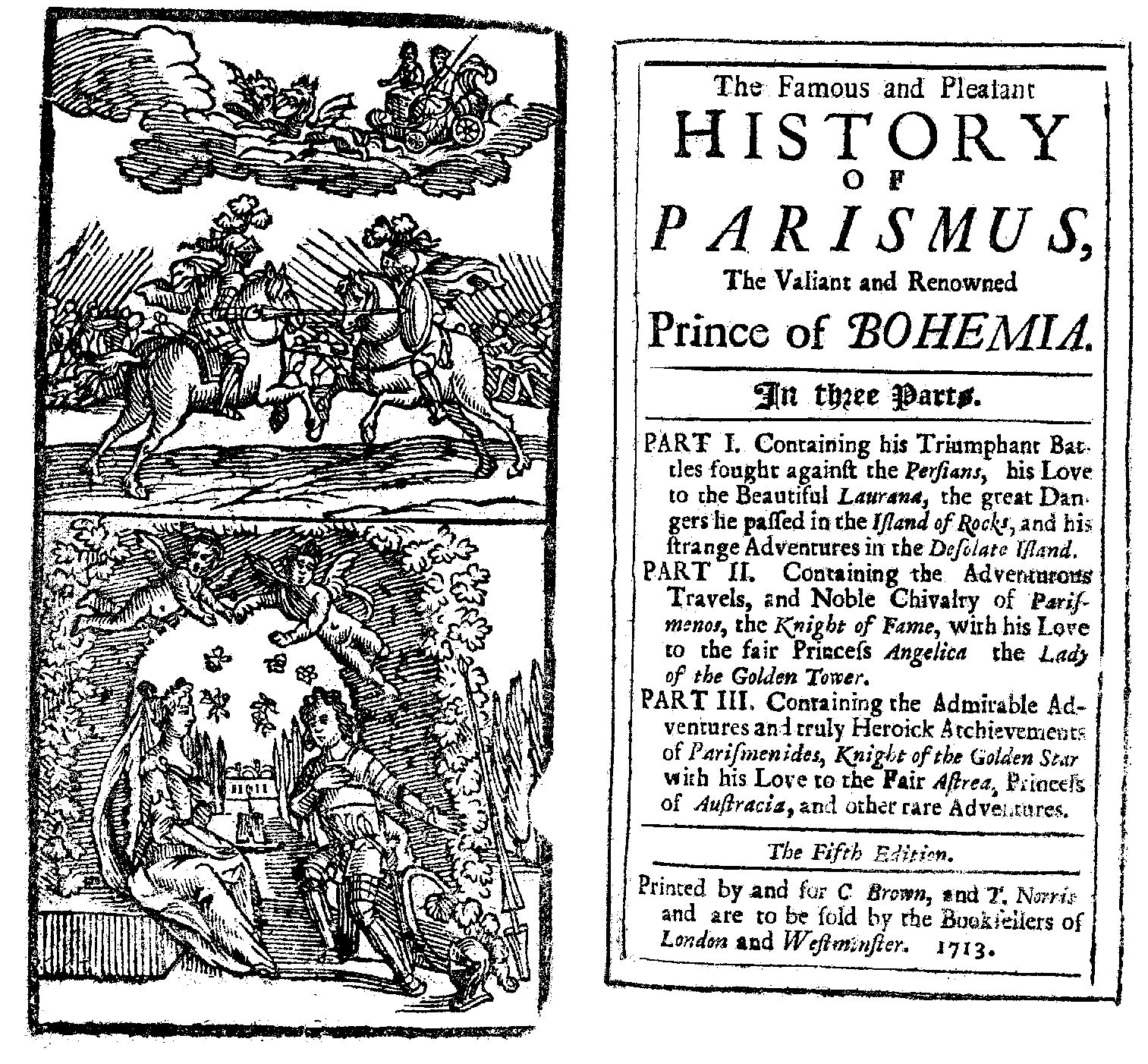![]() The Novel
The Novel
http://pierre-marteau.com/novels.html![]()

The Famous and Pleasant| HISTORY| OF| PARISMUS,| The Valiant and Renowned| Prince of BOHEMIA.| [rule]| In Three Parts.| [rule]| PART I. Containing his Triumphant Bat-|tles fought against the Persians, his Love| to the Beautiful Laurana, the great Dan-|gers he passed in the Island of Rocks, and his| strange Adventures in the Desolate Island.| PART II. Containing the Adventurous| Travels, and Noble Chivalry of Paris-|menos, the Knight of Fame, with his Love| to the fair Princess Angelica, the Lady| of the Golden Tower.| PART III. Containing the Admirable Ad-|ventures and truly Heroick Atchievements| of Parismenides, Knight of the Golden Star| with his Love to the Fair Astrea, Princess| of Austracia, and other rare Adventures.| [rule]| The Fifth Edition.| Printed by and for C. Brown, and T. Norris| and are to be sold by the Booksellers of| London and Westminster. 1713.
[cheap design] frontispiece [two scenes, cheap and antiquated design: Tournament and two lovers in arbour]/ titlepage/ [2] pp. preface/ p.1-179 with numerous (often repeated) standard illustrations/ 12°.
{L: 12450.b.19}
ESTC: t128617.
Source: One of the numerous adaptations of Forde, Emanuel, Parismus, the renowned Prince of Bohemia (1598/99).![]() Cf. for further information A. Esdaile (1912), p.51-54.
Cf. for further information A. Esdaile (1912), p.51-54.
Titel: "History".
The preface promises greatest reading pleasures. The text offers numerous mostly very short chapters, regualriliy introduced by promises of acitions of greatest importance to the sequence of the romance. Princes and princesses, kings and their countries, adventures, battle scenes, scenes of courtship and long voyages (without greater details, presented rather with the usual speed of the narrator who has to get on with all the events). The illustrations are cheap and taken from a repertoire of standard scenes. The heroes can wear ancient dresses, late medieval armour, rennaisance costumes or polite clothing of of the late 17th century - they go on board of ships (to illustrate the voyages), fight tournaments, kill beasts in forests, or eat and drink at table rounds etc.
o.s.